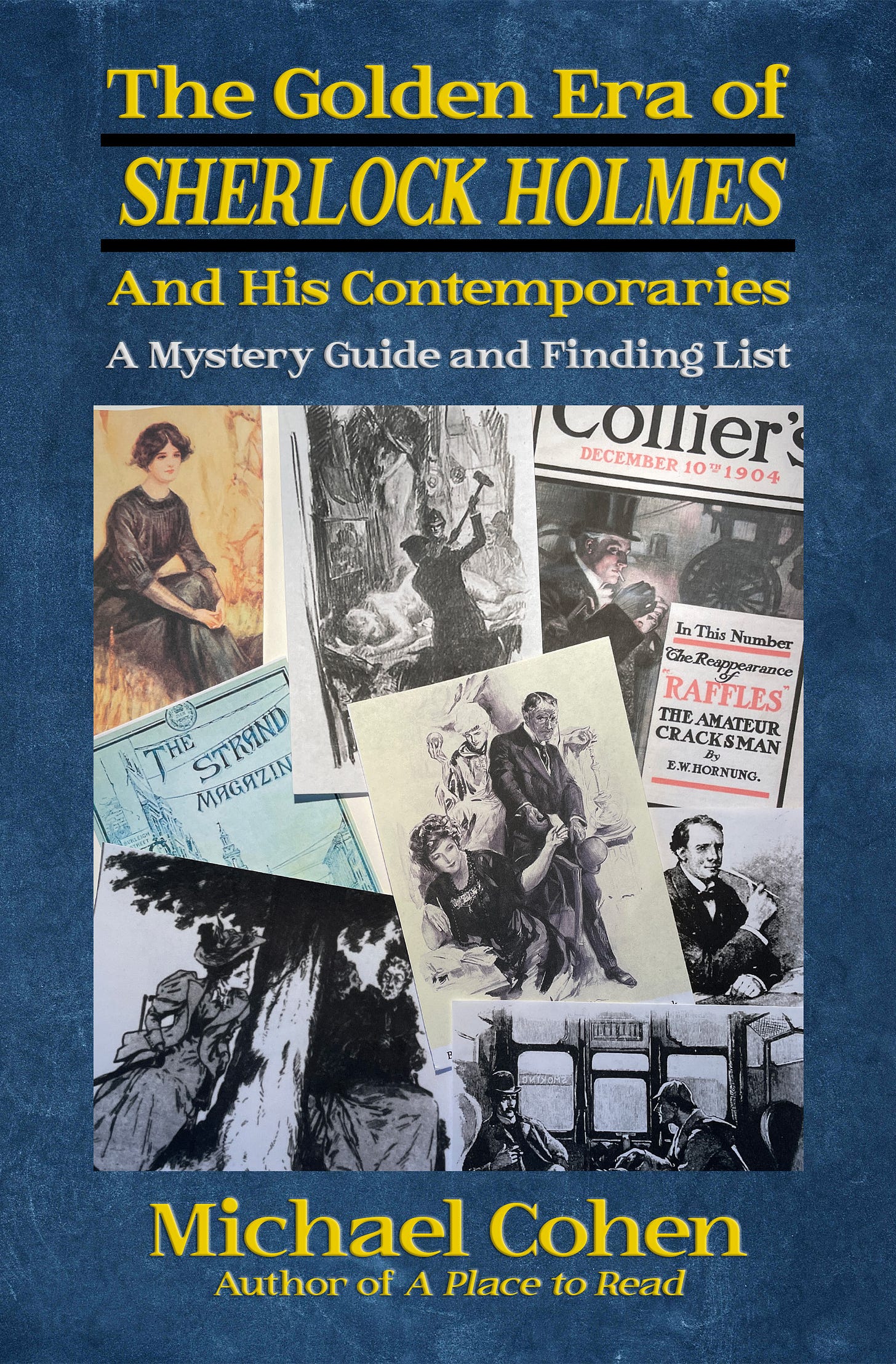Locked Down with Holmes: A Journey into Forgotten Mysteries
When Lockdown Led to a Book—and a Century of Crime Solving
During the pandemic, author Michael Cohen unearthed a world of forgotten detective fiction—from Sherlock Holmes to his many overlooked contemporaries.
In this reflective piece, Cohen shares how a year of deep reading turned into The Golden Era of Sherlock Holmes and His Contemporaries, his newest book exploring the forgotten gems of mystery literature’s first golden age.
The Golden Era of Sherlock Holmes and His Contemporaries was my Covid book. During the year between the first lockdowns until I was fully vaccinated the following spring, I did a lot of reading, and most of it was detective short stories published from the 1890s to the first decade of the twentieth century in England, the United States, and Europe. These stories were not easily available twenty years earlier, when I wrote my first book on mysteries, Murder Most Fair: The Appeal of Mystery Fiction (Associated University Presses, 2000). The stories first appeared in newspapers and magazines, and most had not been reprinted; a good big library might have a few of the periodicals, but if the stories appeared in New Zealand’s North Otago Times or the English Newcastle Weekly Courant, for example, I wasn’t going to find them.
But in the ensuing twenty years, these periodicals had all been digitized and made available through Gutenberg, Google Books, Hathi Trust, and a score of other internet archives. The stories that entertained our great-grandparents and their parents could now be read by anyone for free, in their original context between news of the day and quaint advertisements; best of all, they could be read with the engravings and lithographs that illustrated them. Moreover, there were new reprints of the stories in book form published by Coachwhip Press, the Library of Congress Crime Classics, the Mysterious Press Crime Classics Series, and others.
I read through hundreds of detective short stories, and though I started without any clear writing plan, a book idea began to emerge as I took notes on my reading. I really needed to tell two stories about this treasure trove of entertainment from a century and a quarter earlier.
One story was about Arthur Conan Doyle and Sherlock Holmes. In 1891, a new London magazine, The Strand, decided to publish short mysteries in connected series. Arthur Conan Doyle’s short stories about Sherlock Holmes nearly doubled the magazine’s circulation, and Doyle became rich. Other magazines searched for tales with the same kind of appeal. Dozens of men and women began to write detective stories in the series format of the Holmes Adventures.
The second story was about those other writers who followed Doyle. They created an enormous flowering of this kind of tale, with stories that featured female and male detectives, professionals and amateurs, young and old, aristocrats, gentlefolk, and plain folk. Detectives went rogue and became burglars and conmen. Others developed occult powers. It was a Golden Era of detective fiction, and it lasted for two and a half decades until the First World War. Nothing of its variety had been seen before.
So, The Golden Era of Sherlock Holmes and His Contemporaries: A Mystery Guide and Finding List starts with the story of Doyle’s phenomenal success with the Holmes stories. I look at Doyle’s storytelling in the first ones published, with an eye to his plot construction and the original turns that he gave to situations that had been in the sensational literature repertoire for decades, as well as those that were brand new with him.
Most of the book is taken up with a closer look at the variety of stories written by those who followed Doyle. I give brief descriptions of the mysteries and how they struck out in new directions and created a range of mystery literature of astounding diversity. Finally, I provide a guide for finding the stories in their original, illustrated magazines. Here you’ll find names you knew such as Chesterton’s Father Brown, and less well-known ones such as Ernest Bramah’s blind detective Max Carrados, Anna Katherine Green’s debutante detective Violet Strange, and Gelett Burgess’s “Seer of Secrets,” Astro.
Once I sat down with the story lines in mind and my notes at hand, the book took only a few months to write, and it was a pleasure to revisit all those tales of detectives at work.
Michael Cohen's book, The Golden Era of Sherlock Holmes and His Contemporaries (Genius Book Publishing, 2024), is available from Amazon and from the publisher. His earlier collections of essays, A Place to Read (Interactive Press, 2014) and And Other Essays (Glass House Books, 2020), are available in print or audiobook form.
Ready for the book? Find it here… The Golden Era of Sherlock Holmes


